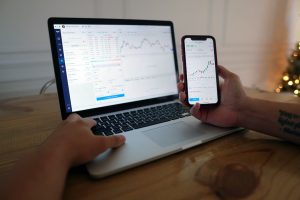The foreign exchange market, or forex market, is the largest financial market in the world. According to the Bank for International Settlements (BIS), the daily average turnover in the global forex market was $6.6 trillion in 2019. However, due to the unprecedented events of 2020, the forex market has experienced significant changes in its trading volumes, liquidity, and volatility. In this article, we will explore the current state of the forex market and how much money is in the forex market in 2020.
The impact of COVID-19 on the forex market
The outbreak of the COVID-19 pandemic has had a profound impact on the global economy, including the forex market. The pandemic led to a significant reduction in economic activity, with many countries implementing lockdown measures to contain the spread of the virus. As a result, the forex market experienced a surge in volatility, with many currency pairs experiencing sharp fluctuations in their exchange rates.
The initial impact of the pandemic on the forex market was a significant increase in trading volumes. According to data from the BIS, the daily average turnover in the forex market reached $6.6 trillion in April 2020, up from $5.1 trillion in April 2019. This increase in trading volumes was driven by higher levels of volatility, as investors sought to manage their exposure to currency risk.
However, as the pandemic continued to spread, the forex market experienced a decline in liquidity. This was due to a combination of factors, including reduced trading activity and increased risk aversion among investors. As a result, bid-ask spreads widened, making it more expensive for traders to enter and exit positions.
How much money is in the forex market in 2020?
Despite the challenges posed by the COVID-19 pandemic, the forex market remains the largest financial market in the world. While it is difficult to estimate the exact amount of money in the forex market, the BIS provides a useful benchmark for measuring its size.
According to the BIS, the daily average turnover in the global forex market was $6.6 trillion in 2019. This represents a significant increase from the $5.1 trillion daily average turnover recorded in 2016. The increase in trading volumes can be attributed to the growth of electronic trading platforms, which have made it easier for investors to access the forex market.
In 2020, the forex market has continued to see high levels of trading activity, with many investors seeking to manage their exposure to currency risk. While trading volumes have fluctuated throughout the year, they remain elevated compared to previous years. In particular, the forex market saw a surge in trading volumes in March and April 2020, as investors reacted to the COVID-19 pandemic.
The future of the forex market
Looking ahead, the forex market is likely to continue to play a critical role in the global economy. As international trade and investment continue to grow, the demand for foreign exchange transactions is likely to increase. Additionally, the growth of electronic trading platforms is likely to make it easier for investors to access the forex market, further increasing its size and liquidity.
However, the forex market also faces significant challenges. The COVID-19 pandemic has highlighted the risks associated with international trade and investment, and there is a growing trend towards protectionism and economic nationalism. Additionally, the growth of electronic trading platforms has led to concerns about market fragmentation and the potential for market abuse.
In conclusion, the forex market remains the largest financial market in the world, with a daily average turnover of $6.6 trillion in 2019. While the COVID-19 pandemic has had a significant impact on the forex market in 2020, it remains a critical component of the global financial system. As the world continues to grapple with the pandemic and its economic fallout, the forex market will play a vital role in managing currency risk and facilitating international trade and investment.






